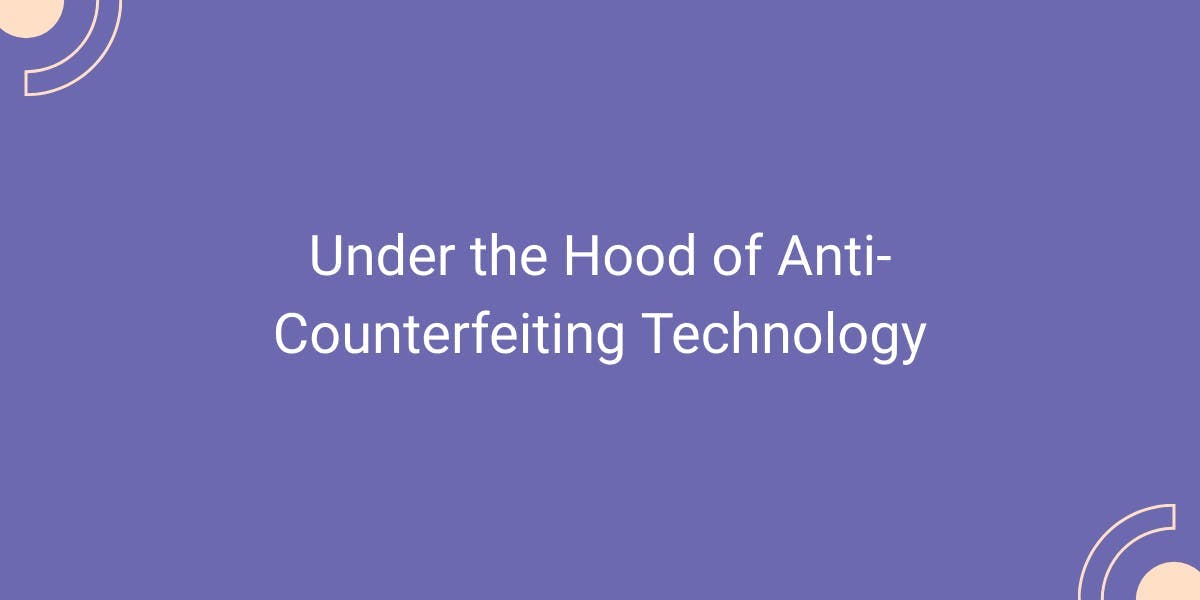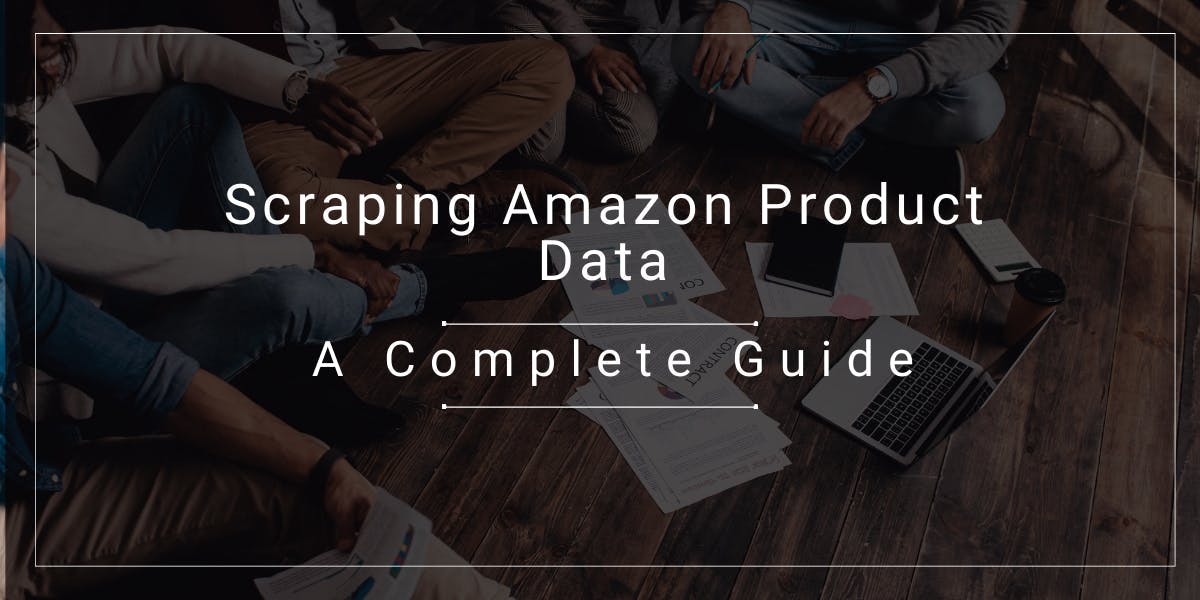Under the Hood of Anti-Counterfeiting Technology
Flipnode on May 26 2023

Counterfeiting poses a significant global challenge, impacting various industries. The Organisation for Economic Co-operation and Development (OECD) estimates that counterfeit and pirated goods account for 6.8% of all imports in the European Union (EU). As online shopping becomes increasingly popular, the proliferation of counterfeit products extends beyond physical stores and infiltrates online marketplaces worldwide. Detecting and combating these illicit goods require robust and sophisticated tools.
Research indicates that while some individuals knowingly purchase fake items, many others fall victim to counterfeit scams. The presence of inexpensive replicas sold online not only tarnishes brand reputation but also has adverse economic effects. Studies suggest that up to 11% of counterfeit purchases could have been genuine transactions, leading to financial losses for legitimate businesses. Consequently, more brands are seeking the assistance of anti-counterfeiting services to mitigate these risks.
The continual growth of counterfeit operations presents numerous challenges for anti-counterfeiting service providers. To combat this issue effectively, companies must employ versatile and powerful tools capable of gathering vast amounts of real-time data, even from the most advanced and elusive sources.
What is anti-counterfeiting?
Anti-counterfeiting technology plays a crucial role in detecting and combating counterfeit goods. However, its impact goes beyond identification; it can also be utilized to proactively prevent counterfeiting through a range of measures. Among the most prevalent anti-counterfeiting strategies is market monitoring using proxies.
Why is it hard to find counterfeit goods online?
Finding counterfeit goods is a complex task as sellers of these goods actively try to evade detection. However, it is crucial to locate and identify these goods for the benefit of potential buyers. Anti-counterfeit services tackle this challenge by adopting a buyer's perspective, but on a much larger scale. To aid in their efforts, they employ bots or scrapers to gather public information about counterfeit goods online. However, not all scrapers are equally effective at collecting this data. So, where should one begin searching for the largest counterfeit markets online and how can web scrapers be employed to approach them?
- Scraping search engines:
To uncover counterfeit goods on search engines, a scraper needs a comprehensive set of keywords and phrases to identify counterfeits and their genuine counterparts. With the right setup, the scraper can automatically retrieve search engine results that lead to websites listing counterfeit goods. These results can be further filtered to prioritize the most recent entries.
However, search engines pose significant challenges for web scrapers. They often implement advanced anti-bot measures, which can trigger CAPTCHAs and result in blocked IP addresses, even if the bots are not malicious. - Utilizing reverse image search:
While scraping images for intellectual property protection is already common, the value of reverse image search should not be underestimated. It can assist in identifying images used to promote counterfeit products. This process involves automating the submission of product images to search engines and scraping the URLs of websites where these images appear. This method proves effective because counterfeiters often use original or slightly modified images in their counterfeit product listings.
Similar to scraping search engines, the challenge here lies in dealing with blocked IP addresses, which not only slows down the web scraping process but also increases its cost. - Crawling e-commerce marketplaces:
When it comes to locating counterfeit goods, crawling e-commerce marketplaces can be particularly fruitful since these platforms are commonly used for selling such goods. Scraping e-commerce websites can prove more effective than search engines in this regard. E-commerce marketplaces typically organize their products into specific categories, which simplifies the scraping process for web scrapers. For instance, if a scraper is targeting a particular category of items, it can focus solely on scraping that specific category, rather than sifting through an entire list of keywords as required by search engines.
However, not all web scrapers possess the capability to extract structured information consistently. Due to variations in the layout of product pages across different marketplaces, each website may necessitate a distinct web parser to extract relevant and readable information.
How to find counterfeit products?
Web scraping plays a vital role in driving the advancement of anti-counterfeiting technology. It empowers businesses to gather valuable data from various online sources, enabling them to detect and combat counterfeit products effectively. However, it's crucial to acknowledge that not all web scrapers are capable of providing the level of precision and accuracy required to satisfy customers who are experiencing financial losses due to the continuous availability of forged goods in the digital realm.
To address this challenge, companies offering anti-counterfeiting services must employ a multi-faceted approach to ensure their customers receive timely notifications whenever counterfeit products surface in the market. Here are some strategies that can be employed:
- Customized Web Scraping Solutions: Instead of relying on off-the-shelf web scraping tools, anti-counterfeiting companies can develop tailor-made scraping solutions that are specifically designed to extract relevant information related to counterfeit products. This approach ensures higher accuracy and efficiency in identifying and tracking counterfeit listings across various online platforms.
- Intelligent Data Filtering: Filtering and analyzing the scraped data is crucial to avoid overwhelming customers with irrelevant or redundant information. Implementing intelligent algorithms and data processing techniques enables companies to sift through vast amounts of data efficiently, providing customers with focused notifications specifically related to potential counterfeit products.
- Real-time Monitoring: Time is of the essence when it comes to combating counterfeiting. Companies should establish real-time monitoring systems that constantly scan online marketplaces, e-commerce websites, social media platforms, and other relevant sources. By leveraging advanced scraping techniques combined with automation and machine learning, companies can swiftly identify newly listed counterfeit products and promptly notify their customers.
- Collaboration with Intellectual Property Rights Holders: Anti-counterfeiting service providers can enhance their effectiveness by collaborating closely with intellectual property rights holders such as brand owners, manufacturers, and distributors. Sharing insights, data, and intelligence allows for a more comprehensive understanding of the counterfeit market, leading to improved detection and mitigation efforts.
- Continuous Improvement and Adaptation: The landscape of counterfeiting is ever-evolving, with new tactics and techniques emerging constantly. To stay ahead of counterfeiters, anti-counterfeiting companies should continuously evaluate and enhance their scraping methodologies, data analysis techniques, and notification systems. By embracing emerging technologies and trends, such as artificial intelligence and natural language processing, companies can further refine their services and ensure accurate and timely alerts to their customers.
By implementing these comprehensive strategies, companies specializing in anti-counterfeiting services can provide their customers with a robust solution that promptly identifies and notifies them about counterfeit products as soon as they appear on the market. This proactive approach not only helps in minimizing financial losses but also safeguards the reputation and trust of businesses and consumers alike.
Conclusion
Counterfeiting poses a global challenge, impacting industries worldwide. As online shopping grows, counterfeit products infiltrate online marketplaces. Effective anti-counterfeiting measures require robust tools. Customized web scraping, intelligent data filtering, real-time monitoring, collaboration with rights holders, and continuous improvement are key strategies. Implementing these approaches enables prompt detection and notification of counterfeit products, minimizing financial losses and protecting brand reputation. Advanced web scraping techniques and anti-counterfeiting technology play a vital role in safeguarding businesses and consumers from the harm caused by counterfeit goods.



